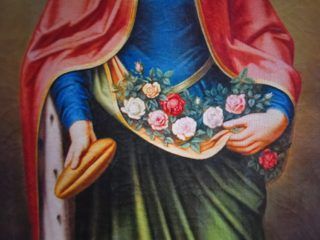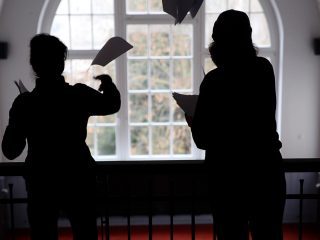Daniela Ortiz in dialogue with Anja Steidinger: The Beautiful Moment to See them Fall

Daniela Ortiz in dialogue with Anja Steidinger:
The Beautiful Moment to See them Fall
Para Monumente Conference 03.12.2021:
Thank you all to make this encounter possible, having Daniela Ortiz here at HFBK aula in this amazing Conference: “Counter-Monuments and Para-Monuments” which Nora Sternfeld and Michaela Melian with many supporters organized. Let me tell you shortly how I got in touch with Daniela. At the time I lived in Barcelona she was one of the activist artists that where involved and very present in socialpolitical movements -as well as in the art scenery of Barcelona. In this intersection I have been working for years when I was asked to créate a one week fórum that we called “Right to move. From external and internal borders to collaborations and lines of escape and perspectives”.
Daniela presented her project “Objective Audience”, which questions the narratives in mass media concerning migrant population and the european migratory control system which we know is directly connected to colonialism. In “Objective Audience” she presented specific case studies from mass media in Spain and she created a reflectory situation within an alternative press conference. Back than we met with the question of “how is public formed?” or “how is public opinion formed?” and now we continue here with the question “Whose memory is publicly manifested?”. The relation or tension between those two questions may be an interesting point also to discuss.
Well, since 2016 years passed by: Daniela now is in Peru, last month her first solo exhibition in Germany at Kölnischer Kunstverein opened. With her work and words Daniela Ortiz intervenes in social power structures that base on concepts such as nationality, racialization, social class and gender writing back with images, body and words challenging hegemonic narratives in order to give space to voices, names and circumstances that have for example not been considered in our schoolbooks or in public space.
So lets get started with the first question concerning the title of our conversation “The Beautiful Moment to See them Fall”
- Who is “them” in the title and from which place/perspective speaks the person who defines it?
- How is this title linked to your work or your way of organizing a work/project?
The questions in the context of the conference are:
- Whose memory is publicly manifested?
- With what means and resources is it represented?
- What is a “place of memory” in a neoliberal world?
- What must not be forgotten and what role does iconoclasm play in this?
- How do you organize the relationship between artist and activist in your work?
Are there questions you want me to ask you? Would you have questions?



Leave a Reply
You must be logged in to post a comment.